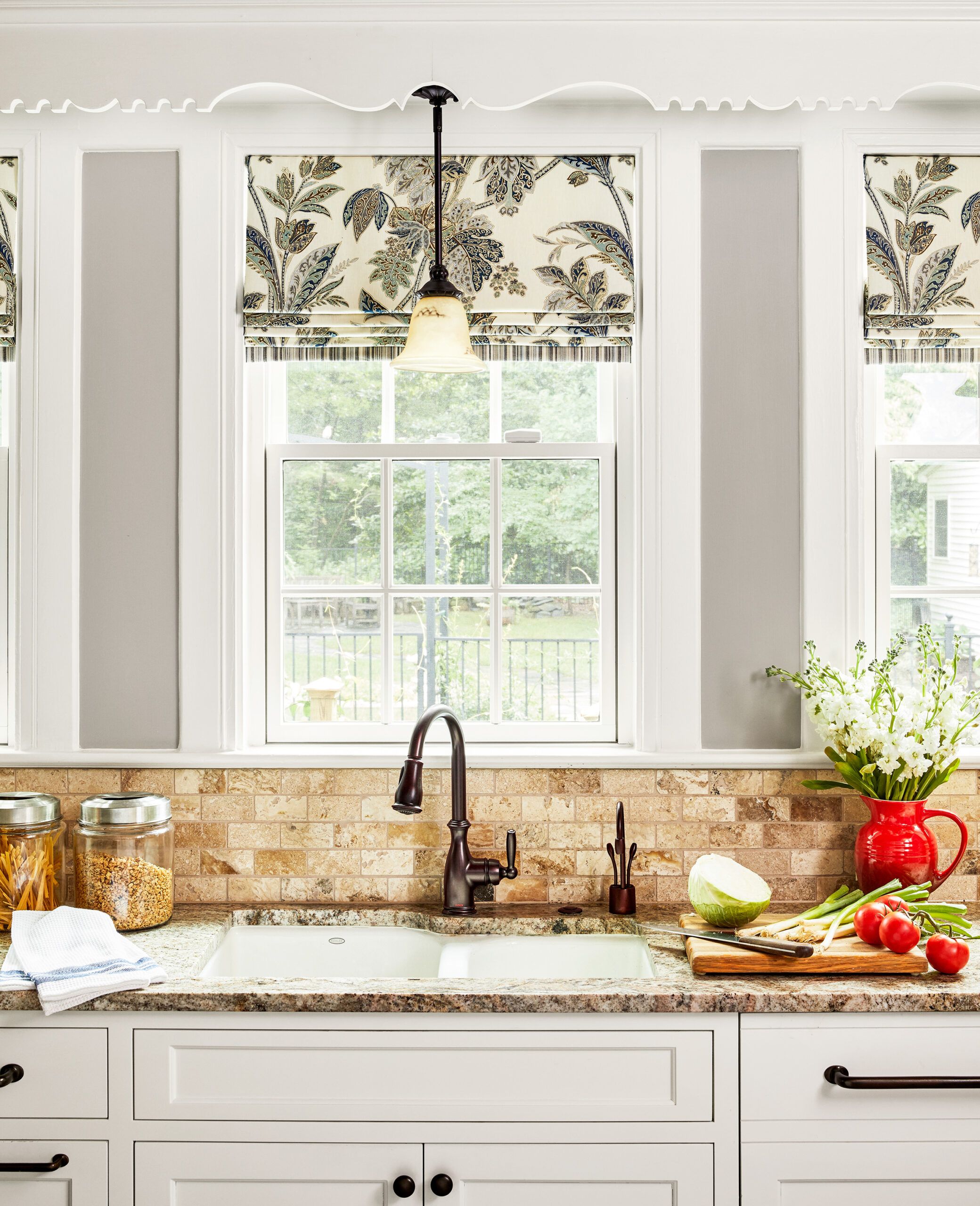Backsplashes are versatile design features that protect walls from splashes and spills and add visual interest and personal style to the heart of your home. Originally standing just a few inches tall and made of simple ceramic tiles, backsplashes can stretch from countertop to ceiling, wrap around entire kitchens, or serve as striking accent pieces behind stoves and sinks. To help you during your renovation project, we put together some of our top kitchen backsplash ideas.
Choosing a Backsplash Design
Backsplashes come in a wide array of materials, colors, and designs that can dramatically transform your kitchen’s aesthetic. When selecting a backsplash design, consider how it will complement or contrast with your countertop and floor.
For a harmonious effect, you can choose materials and colors that complement the existing hues in your kitchen. This approach can make your space feel larger and more unified. Alternatively, a contrasting backsplash can add depth and character to your kitchen design.
The placement of your backsplash can also make a substantial impact. A backsplash that wraps around the entire kitchen creates a sense of continuity and can make smaller spaces appear bigger. On the other hand, strategically placed backsplash tiles in specific areas, such as behind the stove or sink, can create focal points in your kitchen.
After considering how your backsplash will look with the other elements of your kitchen, choosing the material will depend on your personal taste and budget. Let’s take a look at five popular options.
Ceramic Backsplash
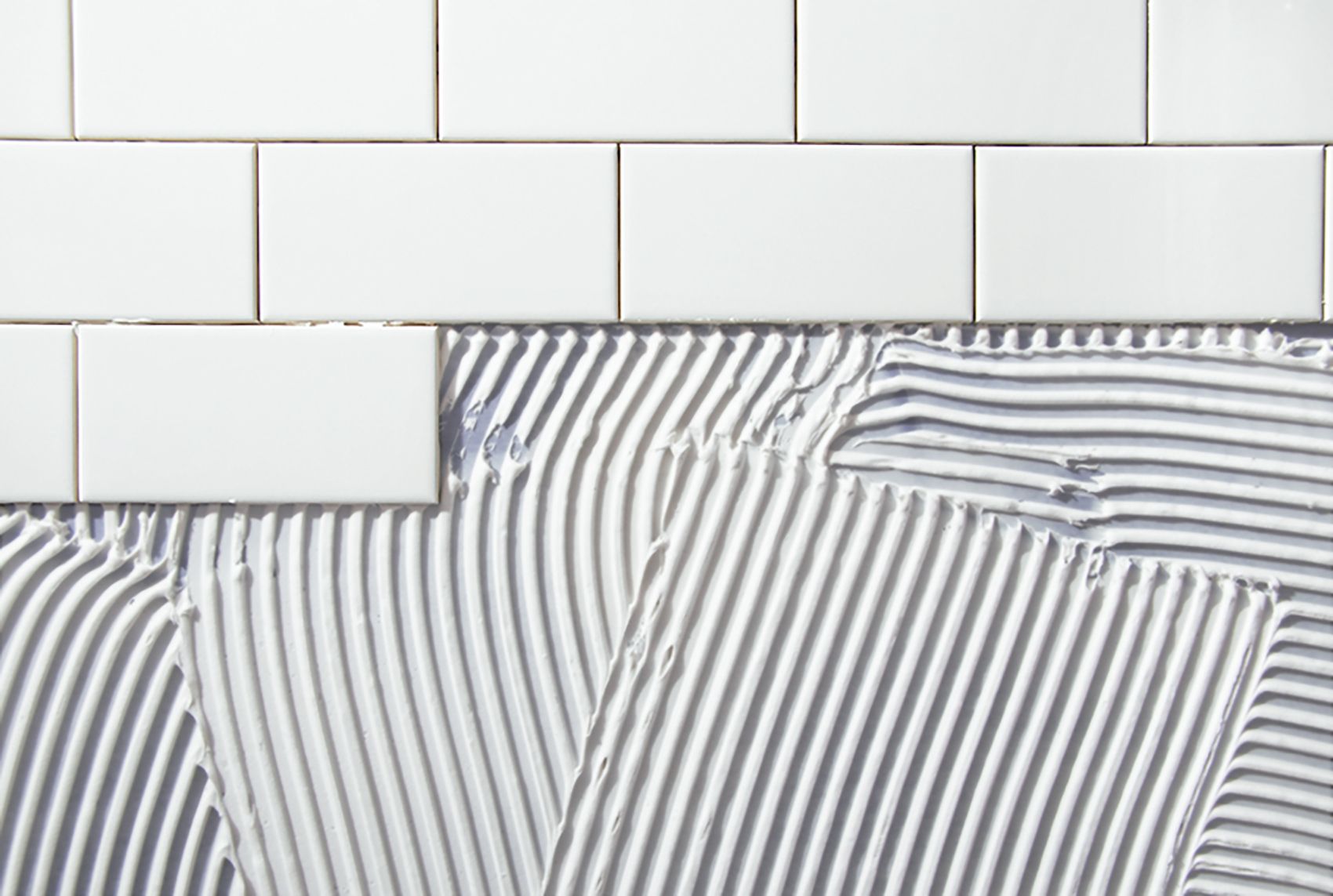
The original backsplash material, ceramic retains its popularity today as an easy-to-maintain, durable, versatile, and often inexpensive choice. These tiles offer a wide range of options in terms of colors, shapes, and sizes—from classic subway tiles to intricate mosaic patterns, ceramic backsplashes can adapt to both traditional and contemporary kitchen styles.
One of the main advantages of ceramic tiles is their minimal maintenance. Regular cleaning with mild soap and water is usually sufficient. Additionally, ceramic tiles are resistant to stains and moisture, making them an ideal choice in high-splash areas such as behind sinks and stovetops.
When installing a ceramic backsplash, consider experimenting with different tile layouts. Herringbone, chevron, or basketweave patterns can transform simple tiles into eye-catching designs. You can also incorporate accent tiles or borders to create a custom look. Incorporating texture through varied finishes can add depth and complexity to your backsplash.
Cost: Ceramic tiles typically range from $12–$32* per square foot for materials and labor, depending on the type and quality of the tile.
*Cost data in this article sourced from contractor estimates used by Angi.
Glass Tile Backsplash
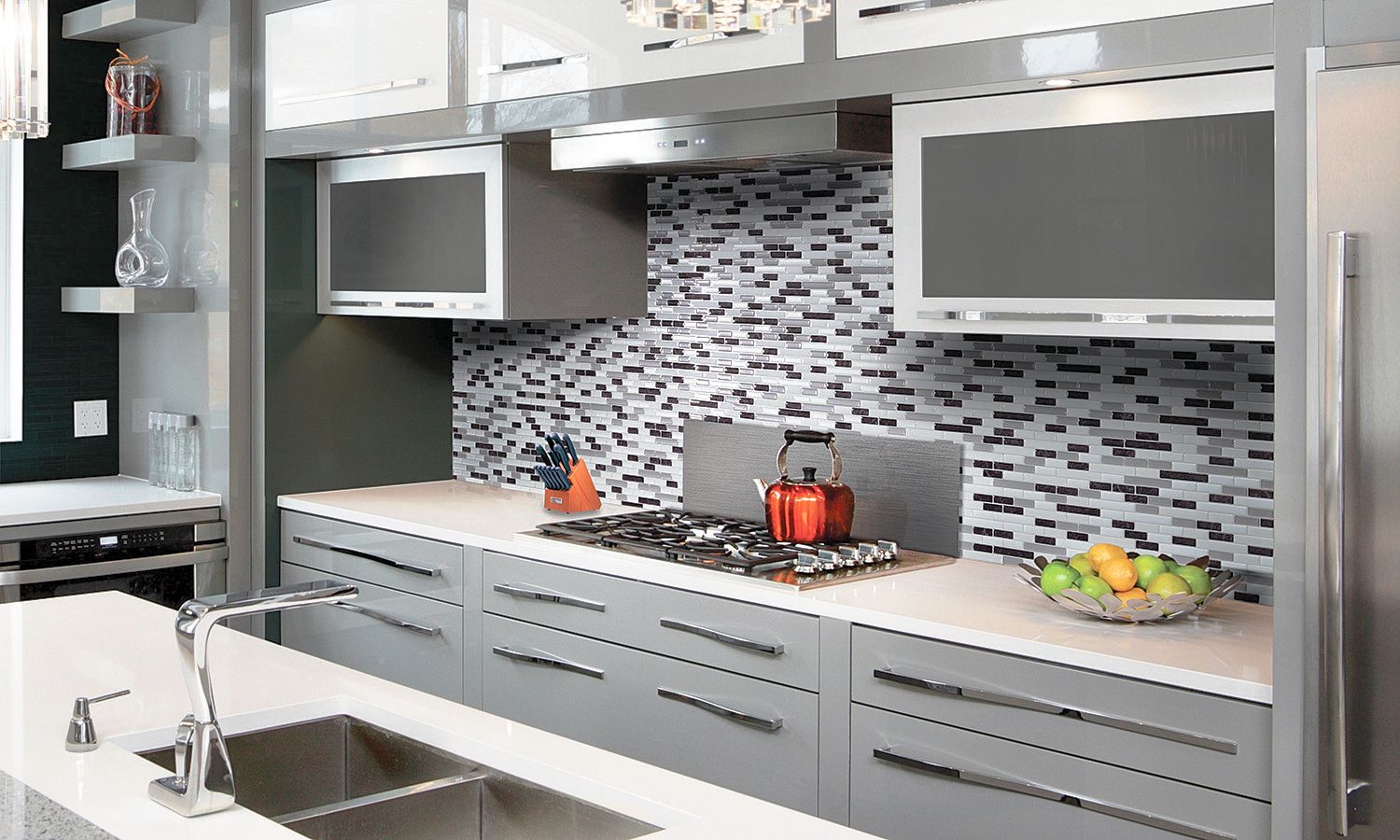
Glass tiles offer similar benefits to ceramic in terms of versatility and ease of maintenance. They have the added effect of reflecting light, making your kitchen appear larger and brighter. Glass backsplashes come in various forms, from small mosaic tiles to larger sheets, providing flexibility in design and installation.
One of the key benefits of glass tiles is their ability to add depth and dimension to your kitchen. Their translucent nature allows for layered color effects, especially when installed over a painted wall. This can create a stunning visual impact that changes throughout the day as light conditions vary.
Maintenance of glass backsplashes is relatively simple, requiring only regular wiping with a glass cleaner to maintain their shine. However, it’s important to note that glass tiles can be more prone to showing water spots and fingerprints, which may necessitate more frequent cleaning in high-use areas.
Cost: Glass tiles tend to be pricier than ceramic. Glass tiles start at $18 per square foot, but prices can go up to $42 per square foot.
Stone Backsplash
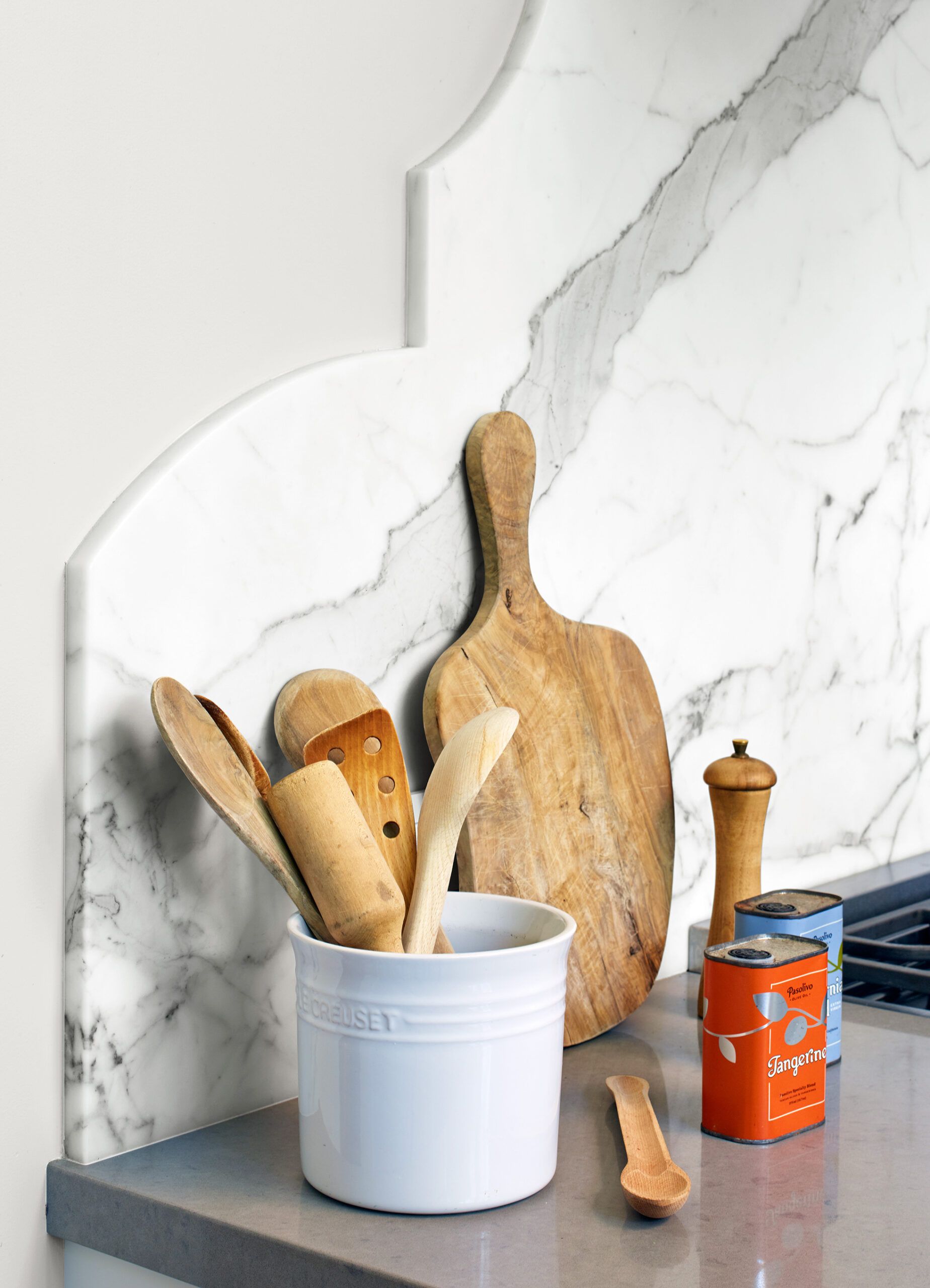
Using natural stone to create a backsplash can give your kitchen a more textured and organic look—although different stones will evoke different moods.
For example, white marble presents a clean, chic elegance, while slate adds earthy character and depth—there is much variation to consider within this category. Stone is also a more expensive material than ceramic or glass, and, being more porous, it is more difficult to keep pristine, requiring regular maintenance with a pH-neutral cleaner and periodic resealing. Additionally, some stones may be more susceptible to etching from acidic substances, so proper care and cleaning is necessary.
Cost: The cost to install a stone backsplash depends on the type of stone. Expect to pay $10 to $68 per square foot for natural stone, $18 to $42 per square foot for slate, $30 to $150 per square foot for marble, $16 to $25 per square foot for travertine, and $20 to $46 per square foot for granite.
Metal Backsplash
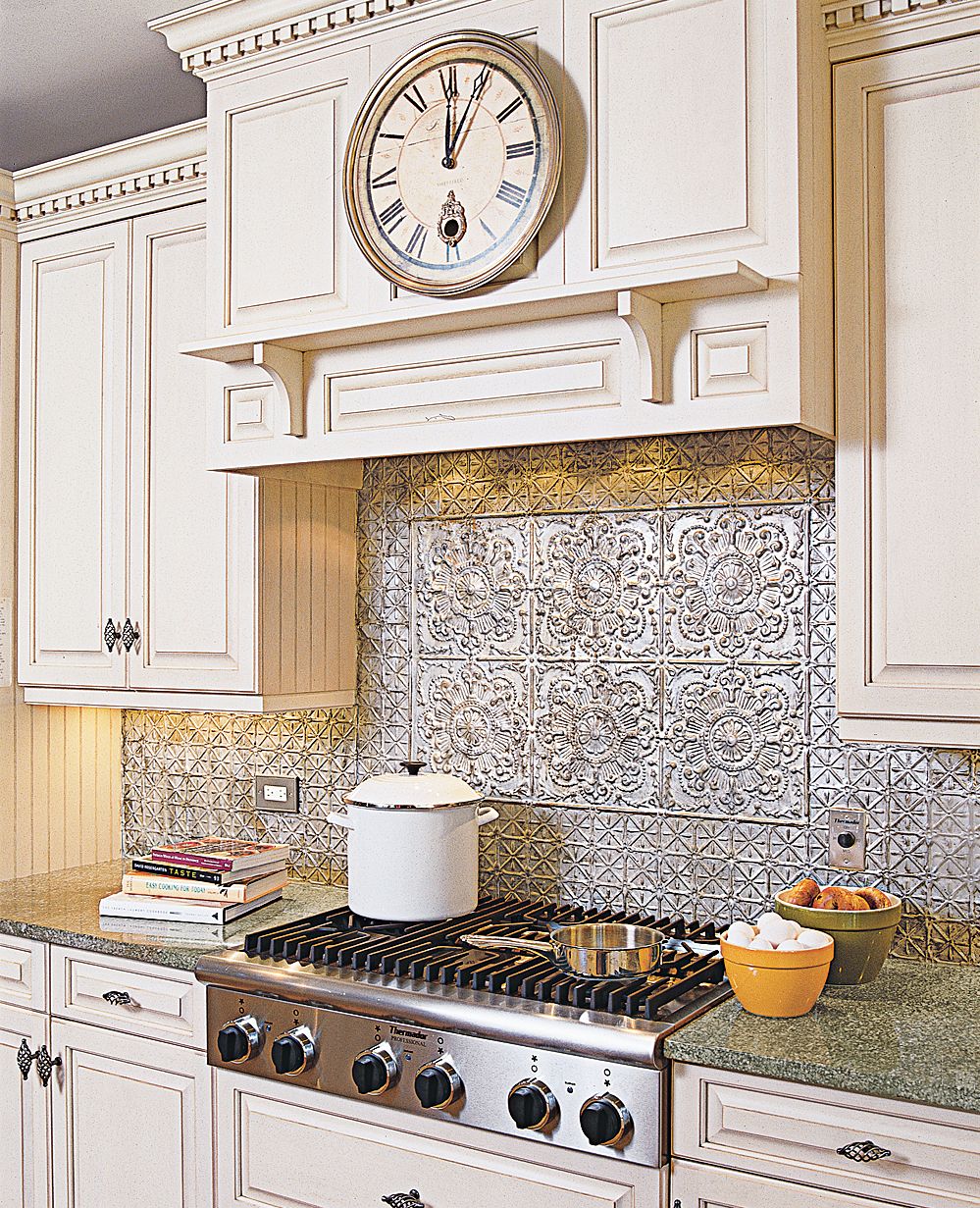
Metal tiles and panels are becoming increasingly popular, and materials like stainless steel, copper, and brass can brighten up the kitchen with their reflective nature while going a long way to elevate your kitchen’s style.
Metal backsplashes come in a variety of sheens and textures, from smooth, brushed metal to shiny, bold geometric patterns. They are easy to keep clean and are resistant to heat, stains, and moisture, making them ideal for use behind stoves and sinks. The biggest challenge to having a metal backsplash may be the possibility of introducing too many shiny surfaces to the kitchen, as appliances tend to be made of metal as well.
Cost: Comparatively, metal tiles are on the pricier side. Stainless steel tiles cost $25 to $75 per square foot for materials and labor.
Wood Backsplash
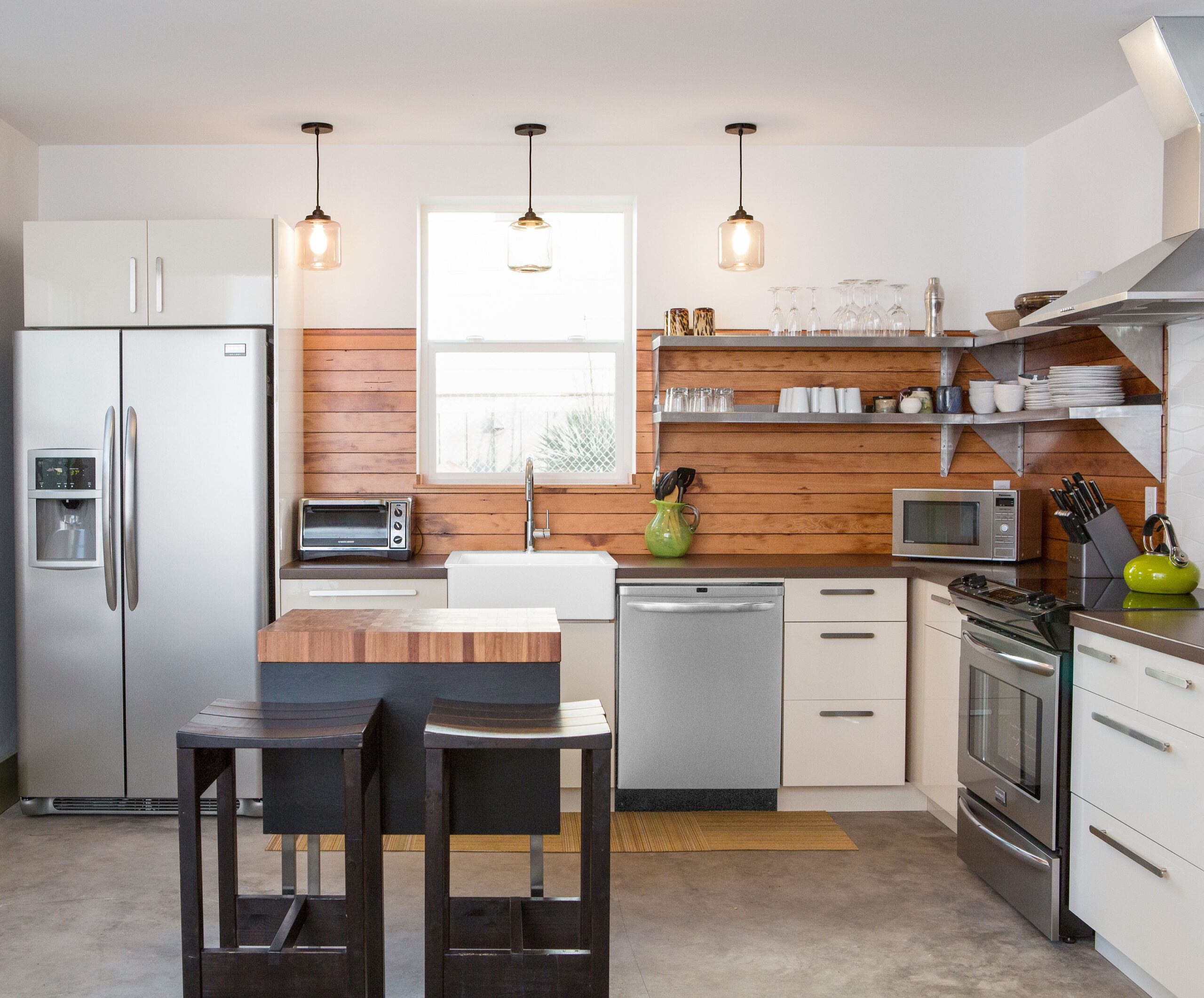
A wood backsplash can complement a variety of kitchen styles, from rustic farmhouse to modern Scandinavian, warming up stone countertops and stainless-steel appliances.
Backsplashes made from shiplap or beadboard can look distinctive, but they must be properly sealed prior to installation and carefully maintained afterward to protect against stains and water damage. Apply a high-quality, food-safe sealant before installation and reapply periodically to maintain its protective properties. Fire codes also typically require clearance between gas burners and flammable surrounding materials, so check your local code.
A contemporary option is porcelain wood, which is virtually indestructible and easy to clean and maintain.
Cost: Expect to pay $18 to $26 per square foot to install a beadboard backsplash.
Our Conclusion
The right backsplash can enhance your kitchen’s overall look and functionality. Whether you opt for the timeless look of ceramic, the modern sleekness of glass or metal, the luxury of natural stone, or the warmth of wood, your backsplash can reflect your personal style and complement your kitchen’s existing elements.
